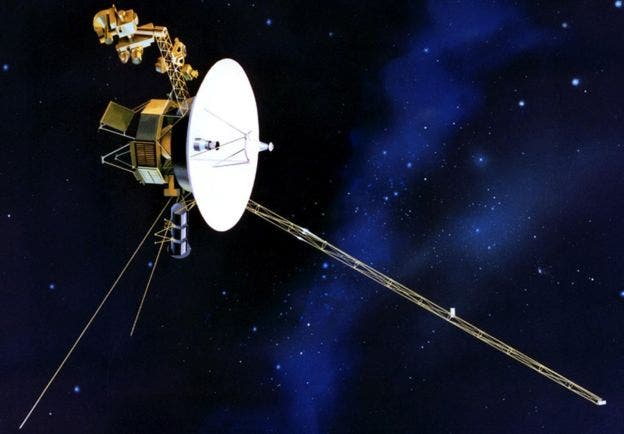
In the 1970s, NASA launched four unnamed probes — Pioneer 10 and 11, and Voyager 1 and 2 — tasked with various missions surveying the solar system and its outer planets. After completing their missions, these spacecraft were left on course to fly outside the solar system, with some already exiting it. This raises the exciting possibility that these probes might cross paths with other stars. If that’s the case, when can expect such an event to happen?
That’s the premise of a new study authored by Coryn Bailer-Jones and Davide Farnocchia, a pair of astronomers at the Max Planck Institute for Astronomy and NASA’s Jet Propulsion Laboratory, respectively.
The two researchers turned to data from the Gaia space telescope. Launched in 2013 by the European Space Agency, Gaia has mapped the positions of more than 1 billion stars to the highest precision yet of any mission, greatly facilitating astronomers’ efforts to understand stellar evolution and history.
Using one of Gaia’s recent datasets of 7.2 million stars in conjunction with the space probes’ known trajectories, the researchers were able to calculate when the spacecraft might come closest to a star system.
As expected, the spacecraft will drift through space a very, very long time before arriving in the vicinity of a star system. According to the results uploaded to the arXiv preprint server, the four spacecraft will come close to about 60 stars in the next one million years.
Phys.org reported that Pioneer 10 — a space probe launched in 1972 and NASA’s first mission to the outer planets — will likely be the first to pass by a star system, namely HIP 117795, which lies in the constellation Cassiopeia.
According to computations made by the researchers, Pioneer 10 will pass within 0.231 parsecs; one parsec is equal to about 3.26 light-years or roughly 31 trillion kilometers. This event could happen as early as 90,000 years from now. Unfortunately, this means that the probes would have long ceased operating (the Pioneers already have), making it impossible for us to receive information about any signals from an alien civilization it might encounter.
However, all four probes will cross paths with stars systems too far away to be captured by their gravity. It might take 1020 years (that’s 10 followed by 20 zeroes) before any probe collides or gets captured by a star system.
But, it’s important to remember that these spacecraft’s main missions were to explore our solar system’s planets. The fact that they have the opportunity to exit the system is just a bonus. If we were to send a spacecraft directly to a star, it would take a lot less for us to perform an encounter.
The closest star in our vicinity is Proxima Centauri, lying more than 4 light-years away. With our current technology, it might take 10,000 years to reach it.


